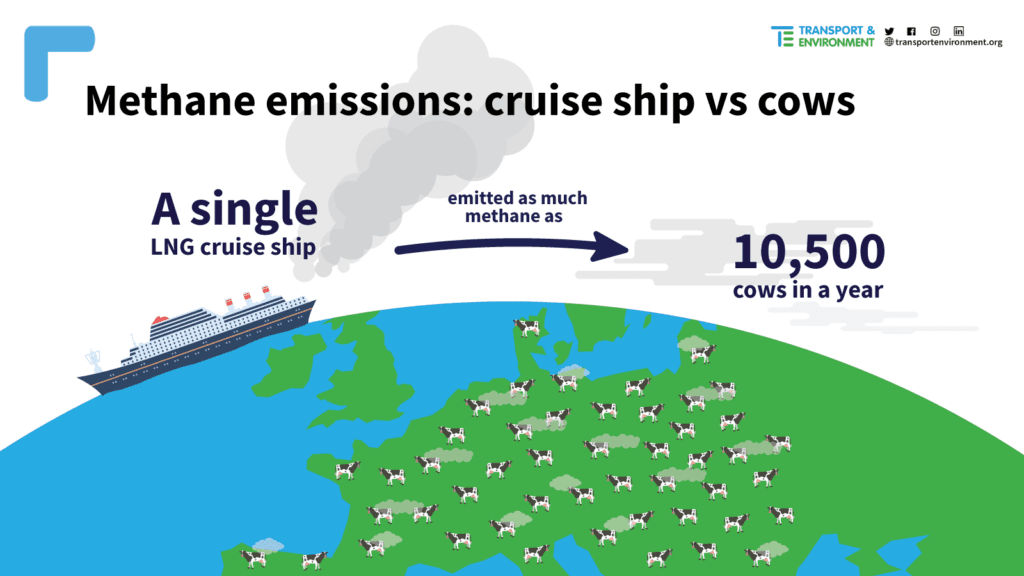Cows protest the use of LNG as a marine shipping fuel
On the heels of the cow demonstration in Marseilles, France, cows again take to the streets in Ottawa, Canada to say ‘It wasn’t me, this time’.
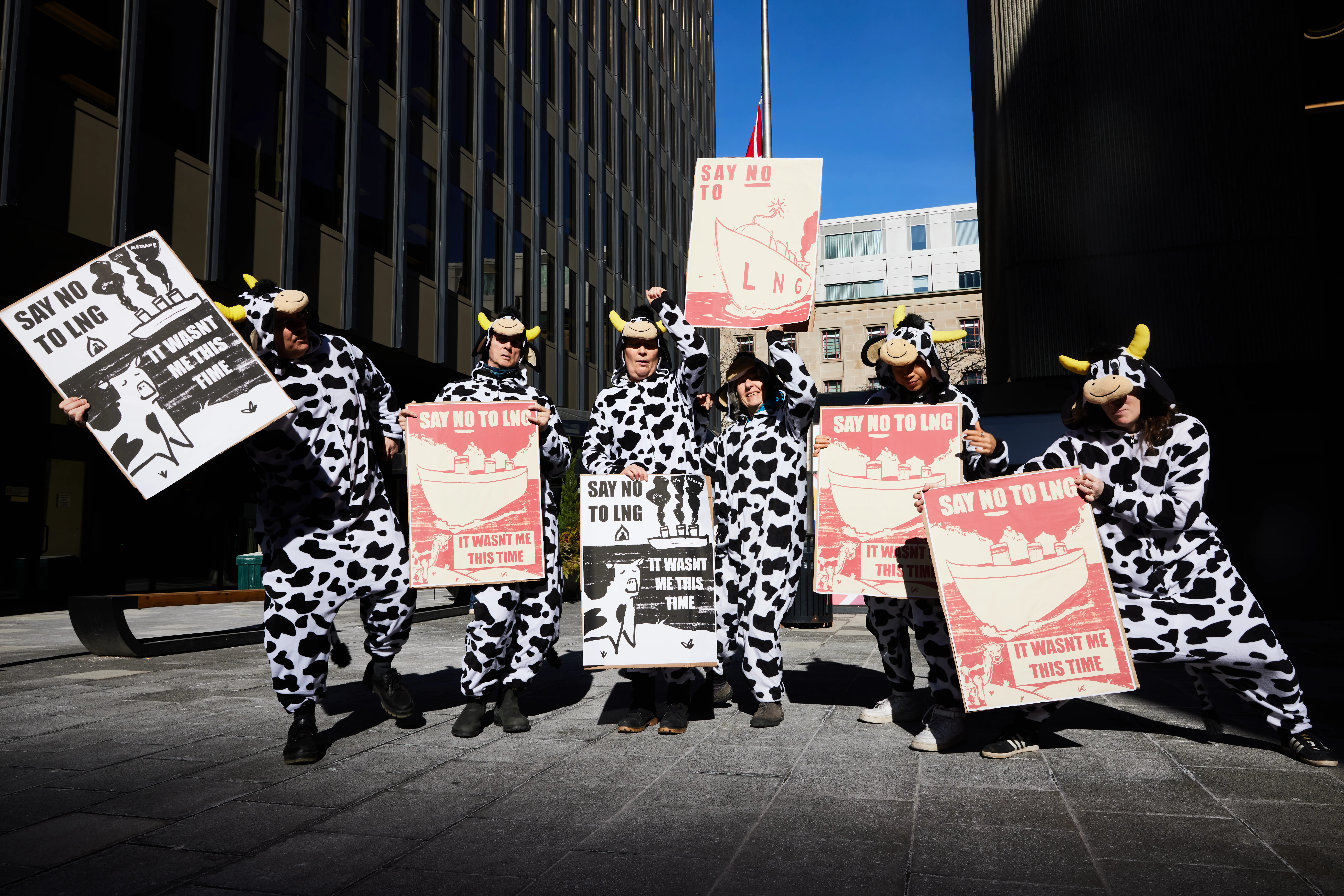
Today, outside the Canadian Gas Association (CGA) and the Chamber of Marine Commerce (CMC) offices, cows could be herd 🐄 chanting ‘Hey hey, moo moo, shipping is the problem too!’
The CGA and CMC are the voices of Canada’s marine shipping and natural gas distribution industries, and they are both big promoters of using fossil methane in our homes and economy.
This follows on the heels of a connected demonstration in Marseilles, France, with more on the horizon as we approach the IMO’s Marine Environment Protection Committee (MEPC) meetings next week.
Cows have gotten a bad rap lately
Methane is 80 times more powerful at heating the planet than CO2, and accounts for 30% of the climate crisis. From a health, community and food security perspective, fracked methane emissions are associated with increased respiratory emergency room visits, and more than 200,000 premature deaths. Reducing methane emissions could also prevent more than 20 million tonnes of crop losses annually by 2030.
With methane emissions rising steeply over the past years, cows often receive much of the blame. It’s true agriculture is partly responsible, but fossil gas from fracking, shipping, transport, transmission, and other oil and gas exploration tops the list – and is growing.
In 2020, agriculture accounted for 30 per cent of Canada’s total methane emissions, the majority coming from beef and dairy cattle, with oil and gas operations at 38%. Cows are justified in saying ‘them too’ and pointing the finger at gas producers. Unfortunately, cows will have even more of a case in the years to come.
Global atmospheric methane levels in 2021 are 162% greater than pre-industrial levels and are growing rapidly. Within the shipping sector, methane emissions are predominantly from using Liquified Natural Gas (LNG) as a marine fuel and consequential ‘methane slip’ from marine engines.
LNG is 85-95% methane, which escapes throughout the entire LNG distribution supply chain – from wellhead to end use – emitting significant quantities into the atmosphere.
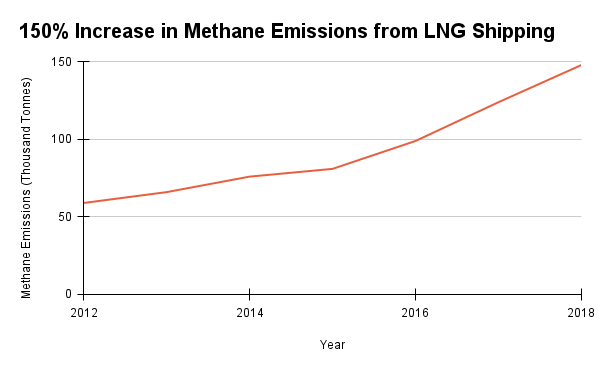
Between 2012 and 2018, the use of LNG as a marine fuel grew 28% globally, resulting in a 150% increase in methane emissions.
This should be a cautionary tale for Canada
Consider the LNG Canada project. This will be British Columbia’s largest GHG emitter when it comes online in 2025; and when its Phase 2 is complete in 2030, it will be 20 percent of the province’s total 2020 emissions.
Cows are trying to moo loudly this week to be heard by the Canadian delegation attending the United Nations Global shipping regulator—the International Maritime Organization (IMO). From March 18 – 22, the IMO’s Marine Environment Protection Committee (MEPC) is meeting to establish new rules that can impact methane emissions from marine engines.
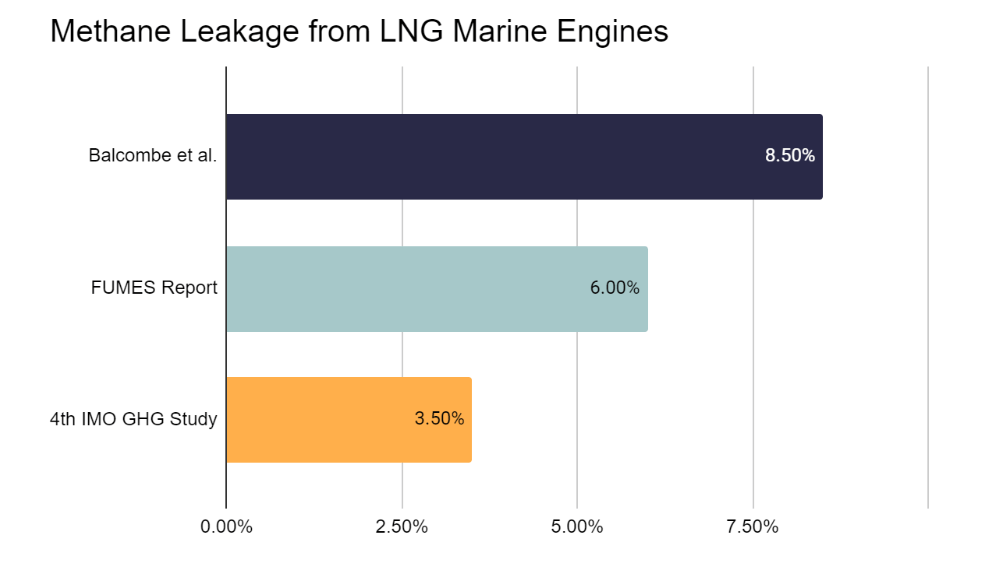
As depicted in the graph above, research from the FUMES Report and Balcombe et al. show real-world methane leaks from ship engines are much higher than assumed by the IMO.
The call-to-action for Canada
With urgency in mind, Canada should:
- Exclude LNG from port climate plans as Bill C-33 is currently being debated in Parliament;
- Systematically assess the social and economic cost of methane emissions from ships in Canadian ports, such as through damage to air quality and knock-on impact to communities; and
- Include the following in its Marine Climate Action Plan:
- An assessment of the full impact of LNG as a marine fuel through a life-cycle assessment factor of between 6-8% (see Methane Leakage figure above);
- The use of 20-year time frames (GWP20) combined with a life-cycle assessment to determine climate impacts from shipping emissions;
- Language that explicitly rules out the use of LNG to meet GHG reduction targets in the sector; and
- A sector-specific reduction target for the shipping industry that is aligned with Canada’s international commitments under the Paris Agreement and at the IMO. At the IMO Canada has committed to a 30% GHG reduction by 2030 compared to 2008; at least an 80% reduction by 2040; and zero emissions by 2050.
Taking action to reduce methane emissions presents one of our most effective strategies for addressing the climate emergency in the short-term.
It’s high time shipping regulators acknowledge their significant contribution to rising methane emissions and establish a baseline that accurately reflects the true extent of the shipping industry’s climate footprint.
The cows are watching – and so are we!
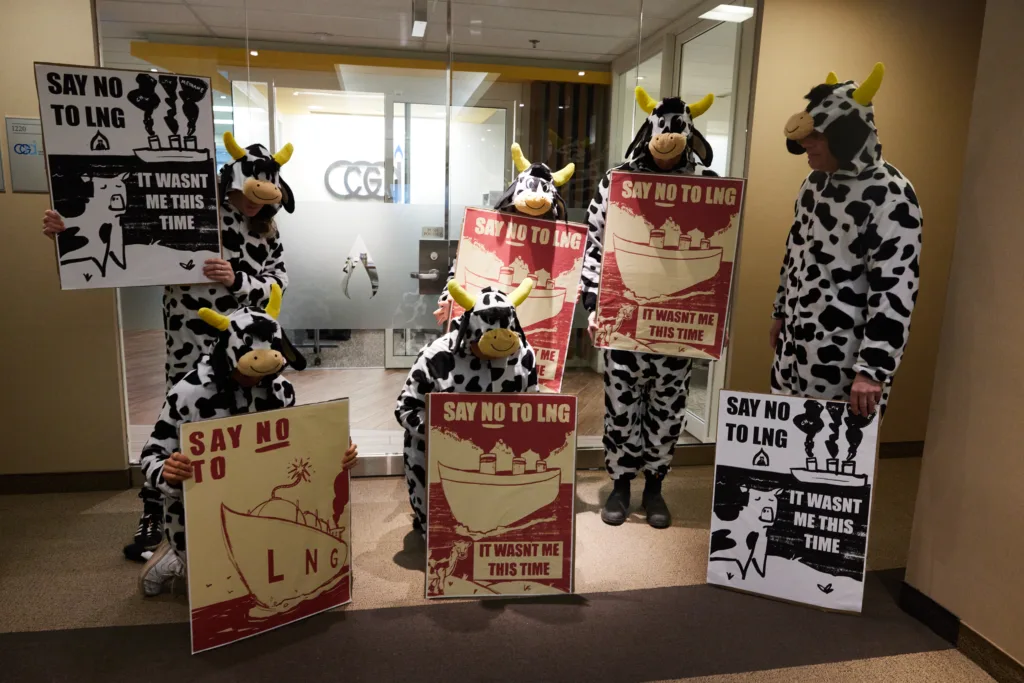
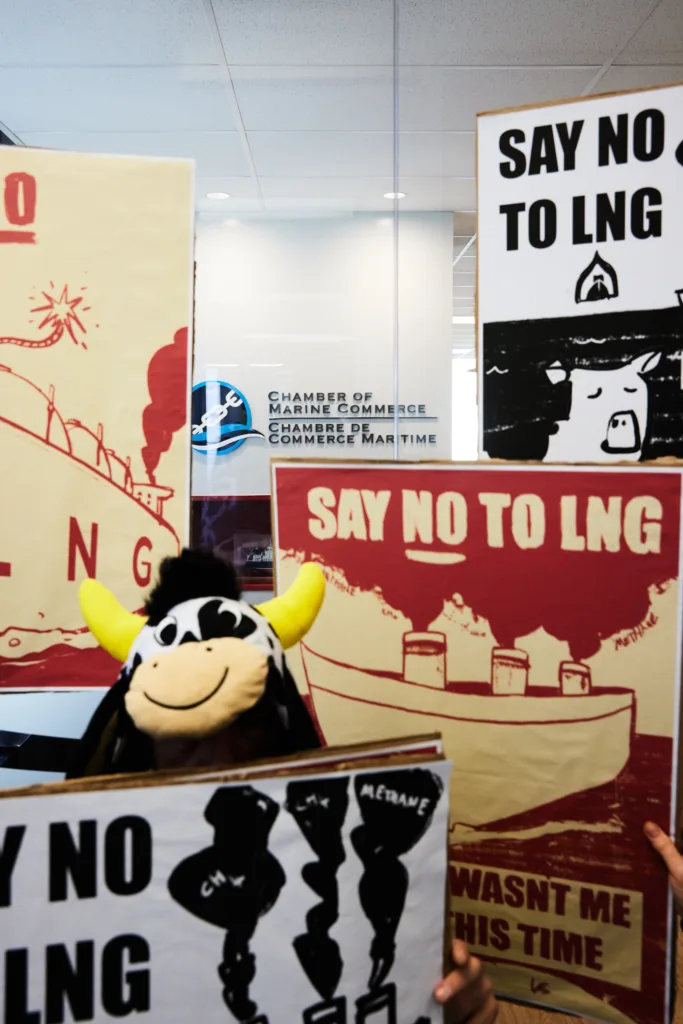
Blog post written by Andrew Dumbrille (Say No to LNG Canada Campaigners & Equal Routes Co-Founder), with contributions from Curtis Martin (Say No to LNG Canada Campaigner) and Elissama Menezes (Say No to LNG Global Director & Equal Routes Co-Founder).
For media inquiries please contact [email protected].
